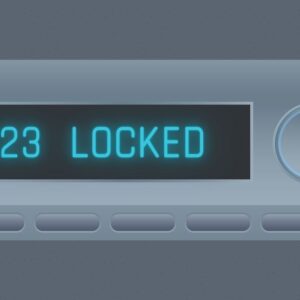Numerous bolts attach various parts under your vehicle and prevent those parts from moving, no matter the jolts or vibrations whenever you drive. While made from strong materials and usually protected by anti-corrosion measures, the bolts will eventually develop rust from exposure to air and moisture.
Rust can seal a bolt in place, making the fastener much more difficult to remove. If the bolt becomes too corroded or you apply too much force, part of it might break. The rest of the fastener will remain stuck in the bolt hole, forcing you to cut or drill the part open to remove it. Therefore, it becomes important to know how to remove rust from bolts and screws, and how to remove a rusted bolt, if it comes to that.
How To Remove Rusted Bolts Under Your Car
Fortunately, there are steps you can take to make removing rusted bolts more easy. Learn how to remove rust from bolts, nuts, and fasteners under your vehicle.
Take Your Time
Slow and steady wins the race. Take as much time as you need to prepare for removing potentially rusted bolts. Unlike a professional mechanic, you generally work during your free time and don’t have to chase strict deadlines. You can use rust removal techniques that take several days as long as you schedule them ahead of time.
Thoroughly inspect your car several days before the date you plan to remove and replace parts underneath it. Check the nuts and bolts for signs of corrosion that can make bolt removal more difficult and tiring.
Break the Rust Seal
If you find a rusted bolt, you must break the rust seal that traps it in place. Take a hammer and strike the fastener several times. Aim at the side of the bolt’s head or any part of the fastener you can reach. Apply firm force, but avoid hitting it with all your strength.
After weakening the rust with several taps, try to remove the bolt. In some cases, firmly hammering the bolt will break the rust seal and loosen the fastener.
Apply Penetrating Oil
If hitting the rusted bolt doesn’t break its rust seal, treat it with penetrating oil. This oil dissolves rust and removes it from the fastener. In doing so, it flattens the surface area of the bolt that interacts with your tools, making removing the part easier.
While penetrating oil helps eliminate corrosion, it takes time to work magic. To achieve the best effect, spray the oil on the bolt several days before the DIY repair job.
If you don’t have penetrating oil at home, you can also use cola, lemon juice, hydrogen peroxide, or vinegar, as these products are known to be very good at removing rust. Make sure to let these products sit for at least 15 minutes. You can even let them sit overnight if you have time. Afterward, remove the bolt as you normally would.
Get the Right Tools for the Job
The task of removing rusted bolts requires the appropriate tools. Otherwise, you might grind the flat sides of the bolt head into a rounded shape, making the part too slippery for a tool to grasp.
Use a socket to grab the bolt head. Sockets have more surface area contact with the bolt compared to other tools.
For the best grip, use the socket designed for the bolt. A 6-point bolt requires a 6-point socket, and so on. Additionally, use the shortest socket of that size. A short socket reduces the risk of pulling slightly at the top of the bolt, which can smoothen the head and make it harder to remove in the future.
Avoid using adjustable wrenches, open wrenches, and pliers. These tools touch less of the bolt’s surface area than sockets. Furthermore, they can eventually grind the bold head into a rounded shape.
Furthermore, use a breaker bar instead of a ratchet. Ratchets can’t deliver the torque required to unfasten tight-fitting bolts, especially ones sealed by rust. In contrast, breaker bars can apply more torque thanks to their longer levers. If you don’t have it, consider ordering an affordable, high-quality breaker bar.

Remove the Threadlocker
Corrosion can also affect the threadlocker coating the bolt. Also called thread-locking compound, the threadlocker helps prevent the fastener from rattling and squeaking because of vibrations. It starts off as a fluid but hardens after some time. Car manufacturers often apply the compound on bolts to lock the fasteners after threading them into their holes.
When you examine a rusted bolt, check for any sign that the threadlocker has escaped the bolt hole. If you find rust, inspect the area surrounding the bolt for any electrical components or flammable substances.
Use a torch to heat the compound until the latter liquifies. The heat will also weaken the rust. Aim the flame away from the electrical components and flammables. Also, avoid using the torch if you’ve previously applied penetrating oil to the bolt or its surroundings until you’re sure all the oil has evaporated.
Work the Bolt Back and Forth
Once the socket or breaker bar has a good grip on the corroded bolt, work the fastener until it breaks loose from the rust seal. Apply some penetrating oil to the rust to dissolve the substance. Give the oil some time to remove rust.
After letting the treated bolt stand for a while, turn it 1/4 of the way forward before turning it ⅛ back. Repeat this pattern of movement until the bolt rotates freely.
If you encounter any resistance, stop immediately to avoid the risk of breaking the fastener. Instead, slightly tighten the bolt before reversing it. Also, exert more care around exhaust bolts.
Very few DIYers keep a lift and pit like the ones in an auto repair shop. Most of us have to make do with jacking up our car and sliding underneath on a creeper to access the underside. It’s easy to become disoriented in that uncomfortable position, so keep your bearings and remember which way to turn the bolt.
Turn Up the Heat
You can also weaken rust by heating it. Heat causes a material to expand. Rust is no exception. When rust swells, it becomes weaker, making it easier to break up.
The safest approach to heating rusted and loctite-locked bolts is to use an inductive heat heater with a coil. Hang the coil around the head of the rusted bolt or nut. Wait until the head glows red before removing the heater. Use an impact wrench to remove the heated bolt without damaging the fastener or its threads.
The best method to remove rusted bolts and bolts with loctite is to use an inductive heat.
–Anthony Harlin, ASE Certified Master Automobile Technician
Alternatively, you can go with a torch to apply heat on a rusted bolt. Depending on how much rust has formed, you might need to get the fastener red hot.
Most torches run on either acetylene, methylacetylene-propadiene propane (MAPP) gas, or propane. Propane torches generate less heat than the other types, so it might take longer to heat the bolt.
While using the torch, keep its flame away from anything that might catch fire or melt. Examples of things to avoid are fuel lines, grease, rubber, and electrical wires.
Keep a fire extinguisher nearby whenever you work with a torch or another tool that can produce flame.
Use an Impact Driver
If none of the earlier approaches worked, it’s time to bring out the big gun–the impact driver. Also called an impact gun, the impact driver is a power tool that loosen or tightens large bolts, nuts, and screws.
Keep in mind that impact drivers are brute- force tools. They apply more torque than breaker bars but don’t give precise feedback. A carelessly used driver might shear weaker bolts off, and a rusty bolt is more vulnerable to such damage. Only use an impact driver on bolts of ⅝ socket size or larger.
Use a Bolt Extractor Kit
A bolt extractor kit can be your last chance to remove the bolt, especially if you’ve rounded the edges and can’t use a wrench anymore. You can also use this method if you’re wondering how to unscrew a rusted screw. These kits are typically used when the bolt has been rounded because of several failed attempts at unscrewing the bolt. These kits typically involve hammering a bolt head onto the rounded bolt. These bolt heads have a special shape that’s designed for rounded bolt heads. Once the tool has been hammered in, you can use a breaker bar, an impact driver, or a regular wrench to unscrew the rounded bolt through the bolt head.
Cut the Bolt Off
If nothing else works, you can cut the bolt off with a reciprocating saw. Use a hacksaw blade into a reciprocating saw or just use a manual saw. Once you’ve cut the bolt, remember that this will only remove the bolt’s head from its thread. Depending on the task, this might be all you need to do. However, you might also need to extract the thread using a screw extractor kit.
Any information provided on this Website is for informational purposes only and is not intended to replace consultation with a professional mechanic. The accuracy and timeliness of the information may change from the time of publication.



























